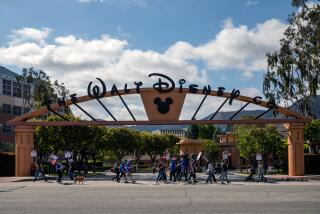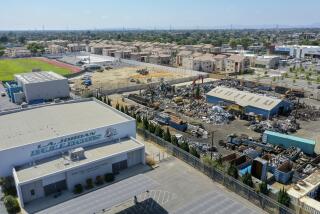Disneyland Accused of Polluting Air
- Share via
Disneyland, the world-renowned fantasy factory, was accused of violating air-pollution rules Friday.
The Anaheim amusement park faces fines of $10,000 per day if the allegations, filed by the South Coast Air Quality Management District, are sustained.
“It does not pose an immediate threat to anybody doing anything at the park,” said attorney Cindy Simovich, representing the Southland’s primary anti-pollution agency.
“It just contributes to a smoggier day at Disneyland.”
The district sought the fines, without specifying a total, in a lawsuit filed in Orange County Superior Court Friday. The suit alleged 13 separate violations of rules designed to cut pollution in the Los Angeles basin.
The alleged violations centered on maintenance operations at the park. The park’s gasoline equipment for dispensing the fuel to park vehicles and the tram have not been properly maintained since September, 1986, according to the lawsuit.
Operations of a paint-spray booth have violated air pollution regulations since 1986, according to the lawsuit. In addition, it is alleged that the park has used the wrong sort of paint in defective sprayers, allowing gases with “volatile organic content” to escape into the air.
“They (the gasses) react with the sun and turn into the brown gunk you see in the air,” Simovich said Friday.
The allegations against Disneyland are far from unique. The volume of violations of paint-related rules have become so widespread that the district now attempts to regulate the type of paint manufactured in the Los Angeles area, according to Simovich.
Park officials said they would have no comment before Monday.
The violations were first noted at an inspection last year, according to Simovich. Since then, additional violations have been spotted, she added.
“We’ve had negotiations with Disneyland. We talked to them about beginning to settle these earlier violations. The negotiations seem to have stopped,” Simovich said.
“It’s not hazardous, it’s not toxic, it just simply contributes to photochemically reactive smog,” Simovich said. “It’s not a simple thing to try to reduce the smog in the basin. It’s something we think is important.”
More to Read
Sign up for Essential California
The most important California stories and recommendations in your inbox every morning.
You may occasionally receive promotional content from the Los Angeles Times.










